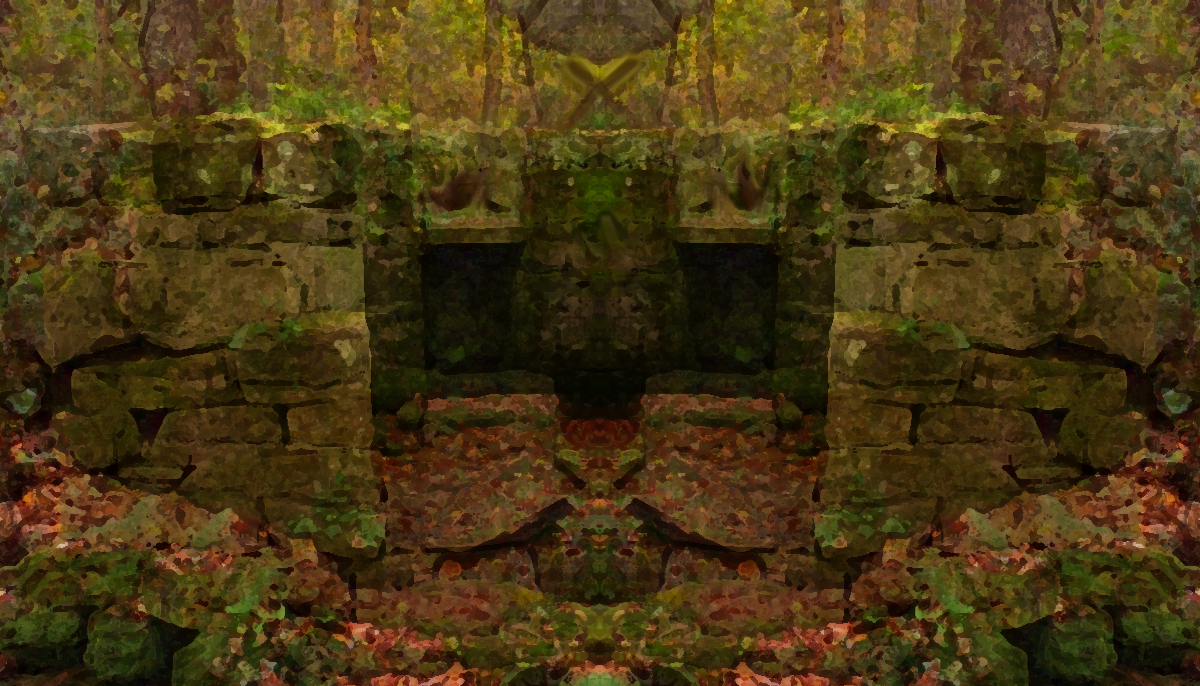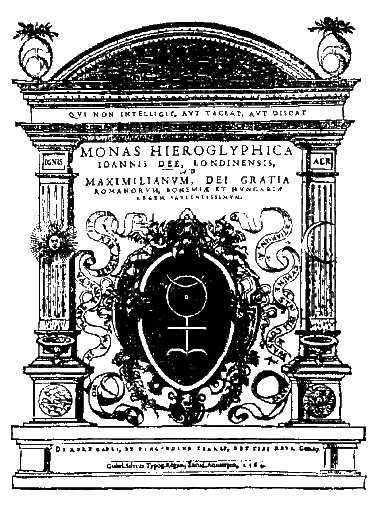Quindarin's Tower & Undercroft
The home base of Quindarin, a famous and powerful local citizen of the area three centuries ago, was once a slender, architecturally interesting spire rising more than a hundred feet above the forest floor of North Raven's Rock wood. Contemporary accounts say it was a lovely, pastel-painted and delicate tower resembling a fancy pastry as much as it resembled a wizard's tower. But within decades of his death, the place had been thoroughly looted and partially collapsed in a wet season after a large hickory tree fell into it. The ruins were later plundered repeatedly for their fine marble stone, mostly used in repairing sections of Raven's Rock Keep and the outlying support pillars of the roadway leading to it. In time the tower was completely sheared down and the location totally overgrown at the surface, but the basement levels and undercroft remain. It's become a popular location for local tourist-adventurers, but the upper levels are bare and covered with crude graffiti and the way into the deeper portion is unclear. Perhaps something is lurking in the darkness below...valuable antiques, certainly, and the wealth of knowledge (and probably gold) of a powerful mage, assuming the humanoids of the nearby Caves of Chaoss haven't plundered it completely yet.
Ground Floor
The ground level has long ago been reclaimed by the actual ground; only a few tantalizing blue and gold-tinted corners remain of what must have been an impressive tile floor mosaic before the collapse of his tower. Now all that remains are a few splintered monolithic stones of the lower course, their massive size a mute testimony to the size of the tower, which may have been over a hundred feet tall when it stood in the spot. These are green with algae and covered in moss and vines, giving little insights to the design of the first floor structure other than the bracings for massive granite pillars, the size of ship masts, now tumbled to the ground near where they held up rings of wooden stairs long since vanished in decay. instead, the semicircle of stones has an opening in the southwest quadrant, plugged with mud and debris unless someone or something digs it out, as happens from time to time. Against the far wall opposite it, a strangely symmetrical false arch also beckons, though clearly made of solid granite and not a real opening at all. Not only are the stones symmetrical between the two archways, but when viewed from the doorway, the shrubs and trees beyond the structure are also possessed of an uncanny symmetry, as if a mirror dimension had once bled into the area, or perhaps it bleeds still, splitting the trees, underbrush, and even insects and squirrels into two equal and opposite versions. The illusion, if an illusion it is, has no effect on sentient beings, and no permanent effect on other creatures. The surface area has been thoroughly stripped of any loose items, and even the stones have been taken from the grounds. Where once marble inlays and delicate blackwood brocades decorated the walls, now nothing remains but the dull brownish-gray granite of the monolithic stones at the surface that once supported the entire tower's weight at the ground.Basement
The first level under the ground floor can be reached through the muddy opening above. The torch sconces have been stolen and the torches long gone, so independent light sources are a necessity for further exploration. The basement has been looted clean of any items of interest and deeply pitted with weathering, graffiti and malicious damage over the decades, but it reveals certain things about the structure that may hold true the rest of the way down, though the passages reaching even further into the structure are all blocked by debris, puzzle locks, and persistent illusions. The -1 level is circular like the ground floor above, but bigger; it extends out an additional 15 feet beyond the 65' wide footprint of the level above, and the orientation of the stairwell near the center of the basement rather than along the outer edge where the openings above are suggests the stairwells aren't adjacent and the levels need to be traversed to get from one to the next; likely Quindarin himself could simply teleport where he wanted to go so convenient stairs - or stairs at all - were not a necessity, and there more for his servants and caretakers than for him. The level below the basement also may be even larger, and is likely to be only one of many levels. The orientation of the lightless halls and rooms in the basement is cardinal (north, south, east and west) even though the space itself is circular, and the walls and floor are in many places impossibly smooth suggesting magic shaped the stone rather than picks and hammers, though it may simply be superior stonework polished to a seamless smoothness. In some places furniture made of stone is also found as part of the floor - granite chairs and pillar-tables - suggesting a high degree of planning went into the construction. If you're building it with all the furniture permanently in place, you must have a fairly set overall plan for this location. A small area near the northeast wall is illusory, noticeable immediately as it preserves the colored tile mosaic appearance that the rest of the floor once had; care must be exercised as beneath it is a 5' drop to a pit once likely much deeper, but now filled this high with mud and forest debris that has washed down or been piled down here by some animal. Near the center of the basement is a double-stair five feet wide and five feet deep leading to a puzzle lock of some kind based on rotating horizontal stone wheels that is either securely blocking any further exploration, or is damaged and can no longer be solved to allow further progress to the bottom of the stairs and the levels below. Many of the walls are covered in interesting historical or fantastical stone reliefs, some of them continuous scenes as much as 70' long and executed with considerable skill. Other than the resilient artwork that has mostly resisted attempts to deface it, this level has been completely looted of anything of interest over the years and only twig and leaf debris from the ground level above remains. The puzzle: 4 tungsten posts with stacks of cuffs on each that seat themselves on a selection when rotated. The leftmost pillars have 3 cuffs, the middle has 2, and the rightmost has only 1 cuff at the bottom. Top row: First two columns from the left have cuffs that are made of highly detailed greenish marble carvings showing the remains of paint in the edges and cuts. Both repeat the same following possibilities:- Walrus (DC12 nature check to know what it is)
- Weasel
- Wraith
- Windmill
- Wolf
- Wasp
- Whale
- Wineskin
- Werewolf
- The taste of salt water
- The taste of blood
- The taste of a hearty ale
- A bitter, acidic taste
- The taste of peach juice
- The taste of mud
- The taste of milk
- The taste of chicken broth
Purpose / Function
Quindarin's home and research center during his (106 year long) life. Quindarin was the court magus of Queen Altabeth and spent a great deal of his time at the court of the Realm, but able to teleport trivially, he also spent a great deal of his time here at his home. He entertained guests and de-facto ruled over the Ravens' Rock Wood and its various denizens. He wrote the book for which he is famous, Monas Heiroglyphia, from the study here.
Who was Quindarin?
Several hundred years ago, an accomplished magic user and prolific magical scientist took up residence in a tower built to his specifications in the forests north of Raven's Rock Keep. During his lifetime, he pursued deep knowledge regarding the unseen world, the powers of Spirit Magic, and the interactions of spacetime across the spheres, planets, and other planes and dimensions of being. Very little hard evidence remains, however, of his accomplishments save for an enigmatic and controversial spellbook, known as the key of Quindarin but actually entitled the Monas Heiroglyphica.
The more-lucid introduction and first few sections talk about the universal themes of mortalkind and a unification of spirit across races - controversial now and likely even more controversial three hundred years ago when he wrote it - the suggestion that Elves, Orcs, Illithids and slimes at their most basic level share a kindred spirit seems like the raving of a madman. This impression is intensified as the book continues, devolving into a manic rant about grand unifying symbology, the heiromatics of geometric shapes and the liberation of polyatheism in the face of infinitely reflected reality. Tallying over 300 pages, most of them apparent psychotic nonsense, the book was rejected profoundly even in his lifetime. As such, Quindarin was not much respected after his death - or disappearance, depending on which story you believe - and his home and research both fell into ruin, overgrown by the Borderland March Forests. The tower was badly damaged in a severe inland storm over a hundred years ago, then collapsed after being struck by a falling tree in a more recent storm event. Most of the stone was plundered for repairs and new construction inside Raven's Rock Keep.
But in the past thirty years or so, many leading scholars of the sorcerous arts have revisited Quindarin's Key from a metaphorical and purely scientific perspective and found, perhaps, deeper insights than had ever been identified before; it's debatable whether any of these were actually intentional on the part of the author. nevertheless, where Quindarin once was ridiculed and reviled as a lunatic and fool, now his teachings have become fashionable, and more than one scholar has taken up the same quest for unification of symbols, if not of races and faiths as Quindarin also called for. He remains an enigmatic and somewhat fanciful character, whose relics and artifacts far outweigh his own body and possessions while alive. Certainly he is almost as great a draw for the con artist and fraud as he is the legitimate scholar.
RUINED STRUCTURE
3117
3117
Founding Date
3000
Type
Tower, Mage
Parent Location
Related Report (Primary Locations)



Comments